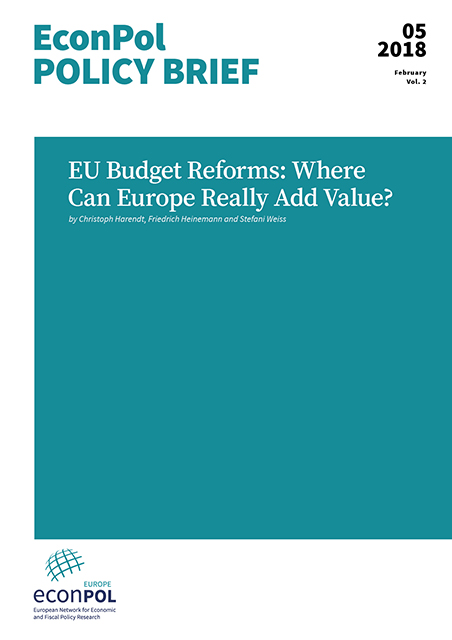EU Budget Reforms: Where Can Europe Really Add Value?
With the European Commission set to publish its proposal for the Multiannual Financial Framework (MFF) for 2021-2027 in just a couple of months, what should its spending priorities be? Are agricultural subsidies and regional transfers really the way forward? This Policy Brief calls for far-reaching EU budget reforms. It supports the Commission’s proposal to use “European added value” (EAV) as a reform criterion and examines whether redistributing competences more effectively between the EU and its member states could improve the EU’s performance.
The debate over the next EU budget is already heating up. In early May the European Commission will publish its proposal for the Multiannual Financial Framework (MFF) for the years 2021-2027. Judging by previous MFF negotiations, agricultural subsidies and regional transfers will continue to swallow a large share of the EU budget. In view of the acute legitimacy crisis currently faced by the EU, this spending structure calls for reform. The Commission has recommended using “European added value” (EAV) as a benchmark for EU budget reform, an approach that deserves support. But although EAV may be appealing, it urgently needs a sound definition and an empirical basis. A joint study by the Bertelsmann Stiftung and the EconPol network partner ZEW recently tried to pin down EAV and apply it to a broad range of policy fields.[1] The study investigates whether allocating competences more effectively between the European Union and its member states could boost the EU’s performance.
Christoph Harendt, Friedrich Heinemann and Stefani Weiss, "EU Budget Reforms: Where Can Europe Really Add Value?", EconPol Policy Brief 5, March 2018.
